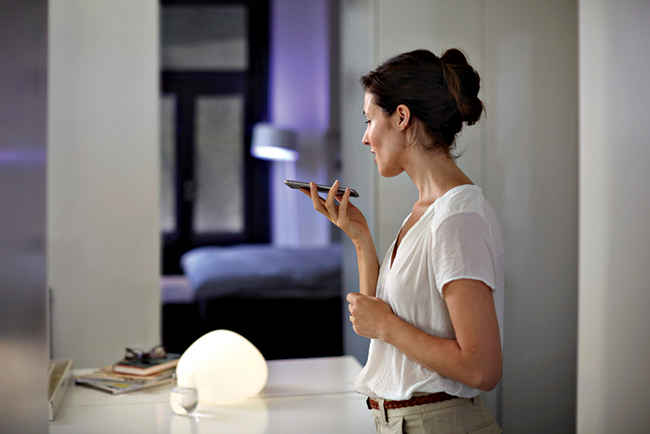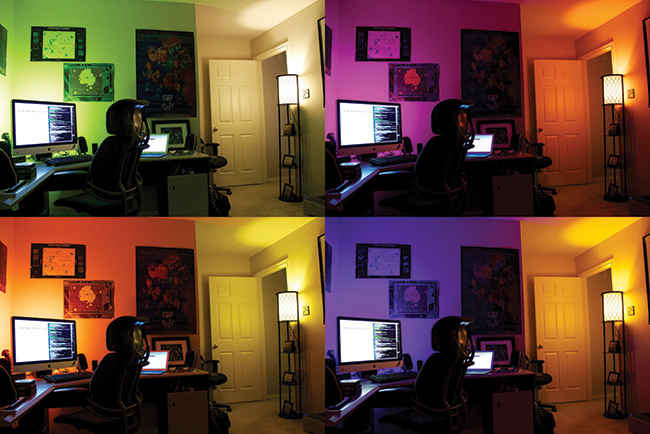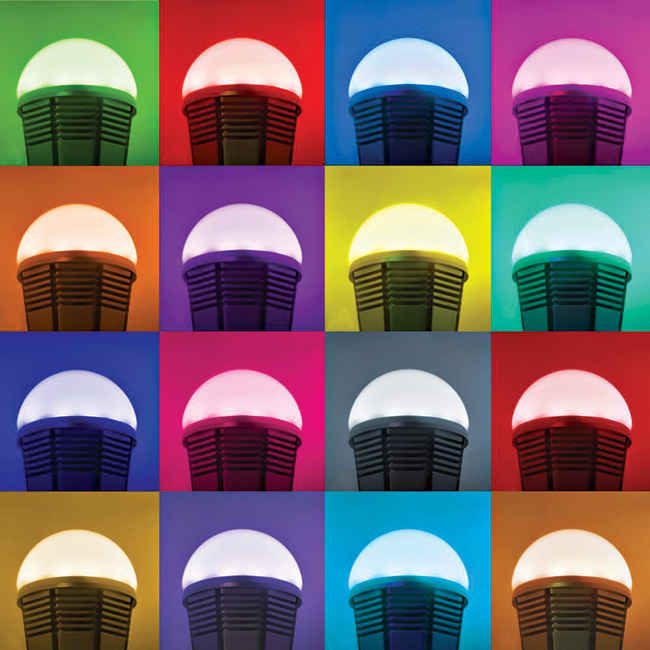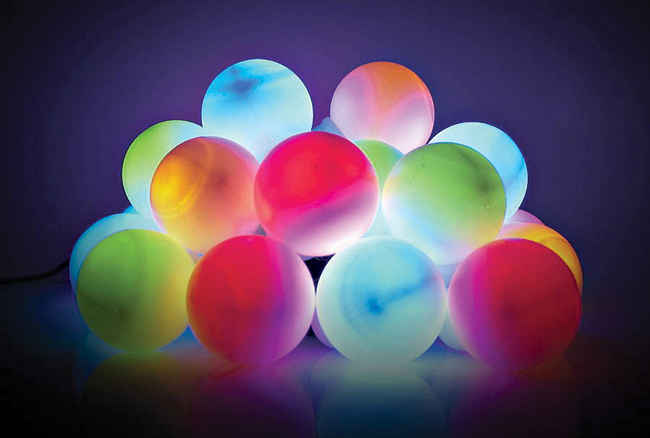Smart lighting solutions for your home
Everything you need to know about smart lighting products, your options, technologies and the future of this space.
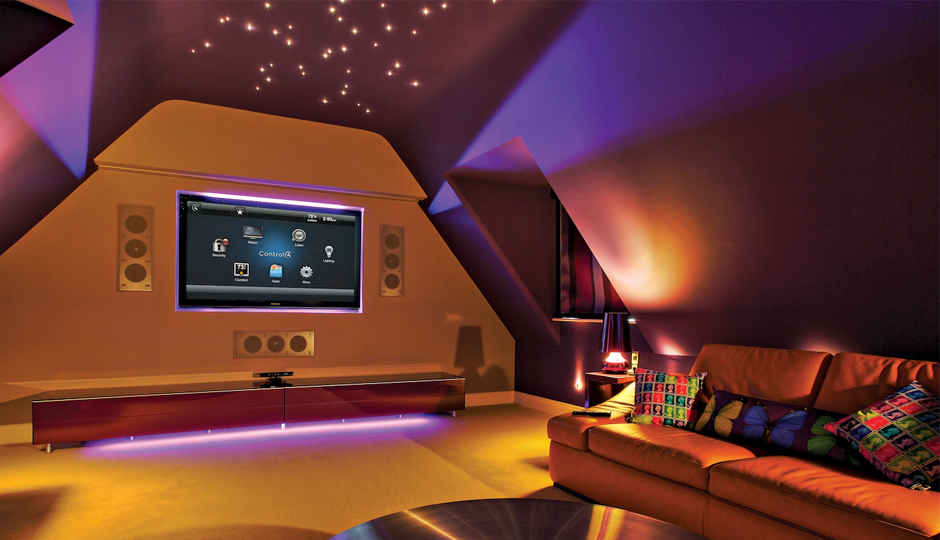
Light plays a big part in our daily lives—whether at work or play. And lighting technologies have come a long way from the flickering torches and oil wick lamps of yore to bulbs powered by electricity. Bulb technologies have also undergone many changes, evolving from early incandescent to fluorescent tubes to LED-powered ones. In fact, now we have an enormous variety of bulbs specifically—many designed for specific purposes like auto, industrial, photography, etc.—and available in wide variety of sizes, light output capacities, hues and colors. Surprisingly though, home lighting in Indian homes is characterized largely by bare incandescent bulbs and CFL lamps, the ubiquitous strip tube light, and the occasional halogen down lighter. However, recent developments in lighting technologies poised to usher in a change – and have a significant impact on the ambience of the home.
 Survey
SurveyWhat’s smart about lighting?
The newest technology on that promises to brighten up your life is the “smart light”. So, what is that makes them smart? For a start, some can be controlled remotely, while others can change colors, or work in tandem to produce various kinds of lighting effects. What makes a smart light different is that it has the ability to respond albeit in a limited fashion, to inputs from the environment. For instance, lights that detect the presence of a person in a room or vicinity, and switch themselves off or on. Or lights that can be remotely controlled through a network, either individually or as a group, without special wiring and controls.
But automatically turning lights on or off is not the only thing that smart lights can do. You can get lights with built-in dimming capabilities, colour changing features, or ones that can be controlled with apps. You can even configure groups of lights that are capable of producing various “light profiles” appropriate for activities like reading, watching TV, or having a romantic dinner.
Types of smart lighting
Broadly, there are two types of smart lights available in the market: sensor-integrated and non-sensor integrated. Sensor integrated lights have the ability to ‘sense’ external stimuli like people and daylight, and automatically send data to the lighting network. The network will then set particular parameters for each light. With these kinds of lights, you also have the option to over-ride the automatic settings and control them manually if you so wish. Non-sensor lights lack sensor, they can also be considered ‘smart’ because you can program them. The extraordinary control that you have over the functioning of the light makes them different from ordinary lights. Many smart lights can be remotely configured and controlled from your mobile phone, tablet or laptops, once you connect to them via Bluetooth or Wi-Fi. A few can be controlled using Ethernet running over power lines (so you don’t need a dedicated Ethernet port for every light fixture). The fact that the lights can be controlled remotely makes it possible to manipulate them from just about anywhere!
Benefits of Smart lights
There are a number of advantages of using smart lights. Here are some of the more significant ones:
Ease of use: Since smart lights can be can be controlled remotely, you are no longer slave to where switches are located. You switch them on or off from another room in the house, from your sofa or bed, or from a café or a public park. With apps allowing you to control the light intensity too, you can manipulate them to suit the task at hand—say for watching TV or reading, or even turn off automatically at a pre-determined time of the night.
Also, with systems that incorporate multiple lights, you have the option to group a set of lights together and program it to your needs. There is also the added comfort of not having to check if all lights are turned off when you’re leaving home in a rush, or in a particular area of the home when it is not required. The bottom line is that the customization possibilities are incredible.
Energy saving: Smart lights can also help you conserve energy, and save on electricity bills. For instance, the ability to dim a light to suit requirements is hard to do with traditional lighting. Also, with motion sensors at work, the light can automatically adjust or turn itself on or off when needed. Then, there’s the option to combine smart lighting with LED-based lights. Since the latter uses lower energy, it will cut power bills. Yet another way to save electricity is to coordinate smart lighting in your home with smart blinds and window shades to enable maximum utilization of natural light.
Setting profiles or scenes: One of the coolest features of smart lights the ability to configure the lighting to match the task and mood. For instance, if you are reading you can have a setting that not only adjusts the intensity of the light, but also the light colour. For a kitchen or bathroom, you could set a ‘morning’ profile that gradually turns on lights and increases the brightness. A custom profile like ‘Vacation’ can be used to make selected lights go on and off in a pre-determined fashion to simulate an occupied home—and deter burglars.
Colours: Thanks to colour-adjustable lights, a new innovation, it now possible to illuminate a room in different shades and hues. So you could have a soft blue light to aid TV watching, or a bright white light for the kitchen from the same bulb.
